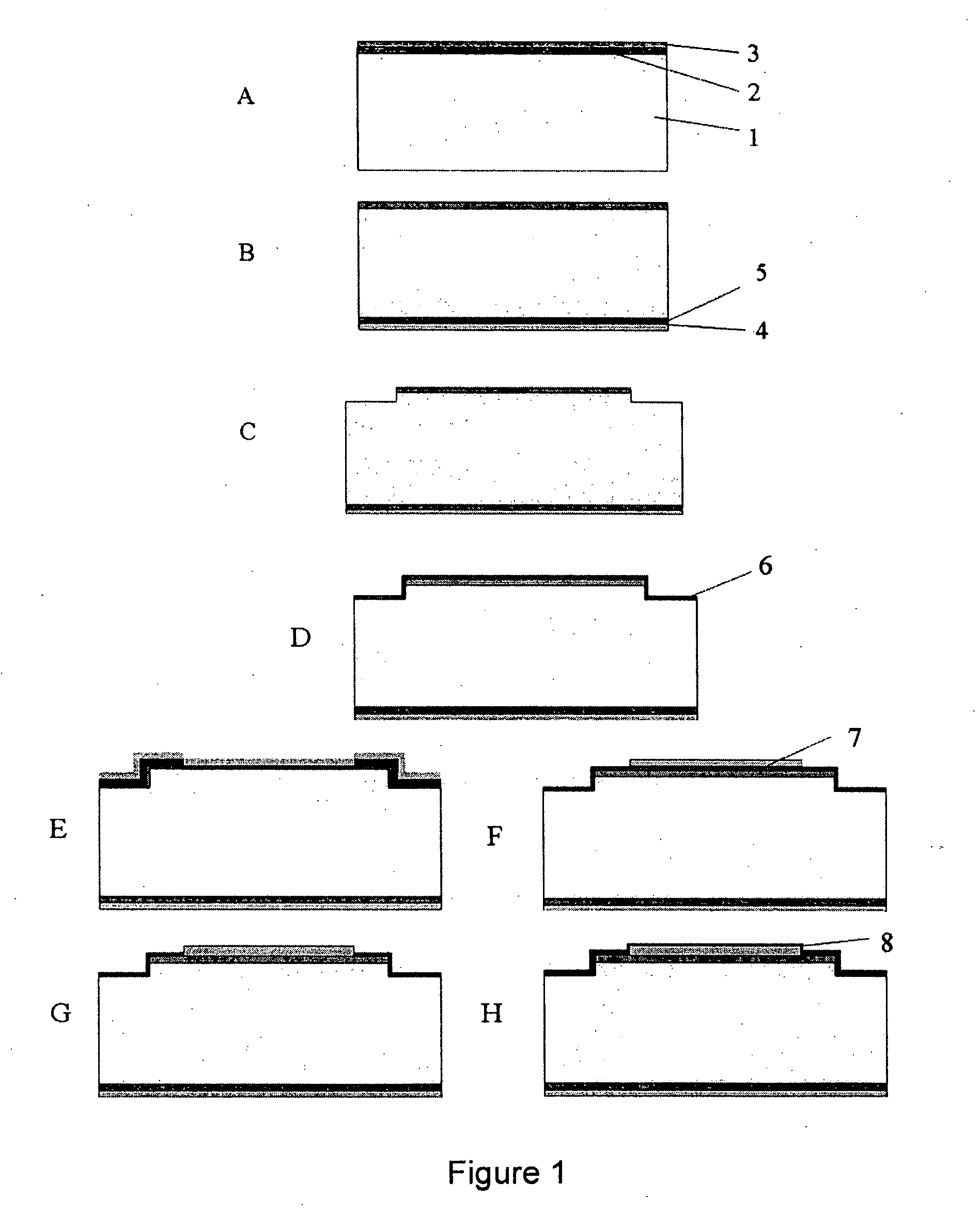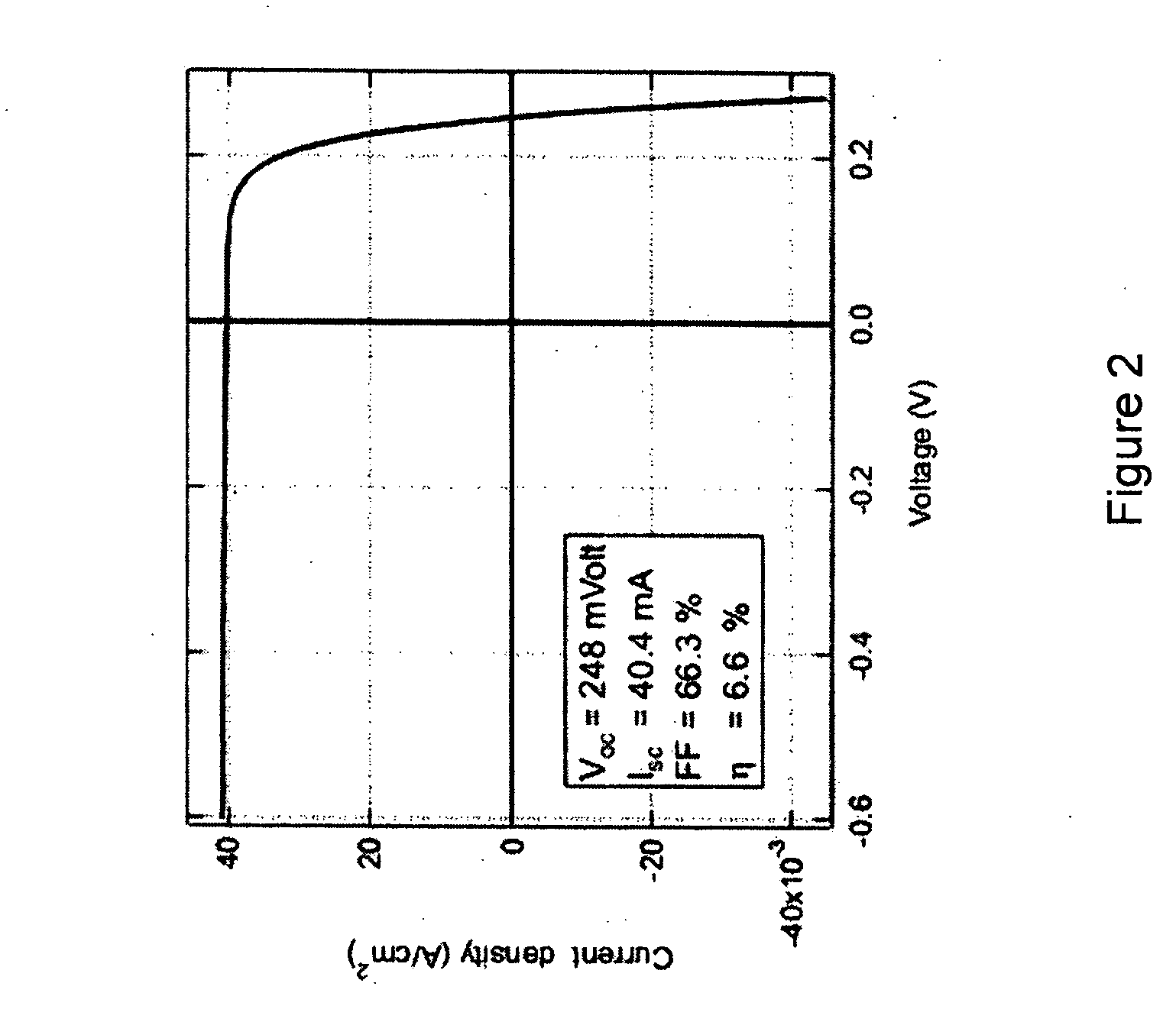Germanium solar cell and method for the production thereof
- Summary
- Abstract
- Description
- Claims
- Application Information
AI Technical Summary
Benefits of technology
Problems solved by technology
Method used
Image
Examples
Embodiment Construction
[0070] A preferred embodiment of a method or the production of a germanium solar cell comprises the following steps (FIG. 1):
Step A.
[0071] Providing a p-type germanium substrate (1) and forming the emitter (n+ region, 2) in the p-type germanium substrate, by means of diffusion using a source of spin-on dopant (3). A diffusion temperature of 600° C. and a diffusion time of 30 seconds were used. The diffusion atmosphere was a forming gas, N2+H2 (10%).
Step B.
[0072] Application of the back contact (4) and realization of the back-surface field (BSF) (5), using aluminum applied by evaporation. Subsequently the Al is diffused into the substrate by applying a temperature step in forming gas (N2+H2(10%)) to create a p+ zone that serves as a back surface field (BSF) (5). A 1 μm thick aluminum layer was evaporated. The diffusion temperature was between 350 and 600° C. The diffusion time is between 10 minutes and 60 minutes. The diffusion atmosphere is a forming gas N2+H2 (10%).
Step C. ...
PUM
 Login to View More
Login to View More Abstract
Description
Claims
Application Information
 Login to View More
Login to View More - R&D
- Intellectual Property
- Life Sciences
- Materials
- Tech Scout
- Unparalleled Data Quality
- Higher Quality Content
- 60% Fewer Hallucinations
Browse by: Latest US Patents, China's latest patents, Technical Efficacy Thesaurus, Application Domain, Technology Topic, Popular Technical Reports.
© 2025 PatSnap. All rights reserved.Legal|Privacy policy|Modern Slavery Act Transparency Statement|Sitemap|About US| Contact US: help@patsnap.com



